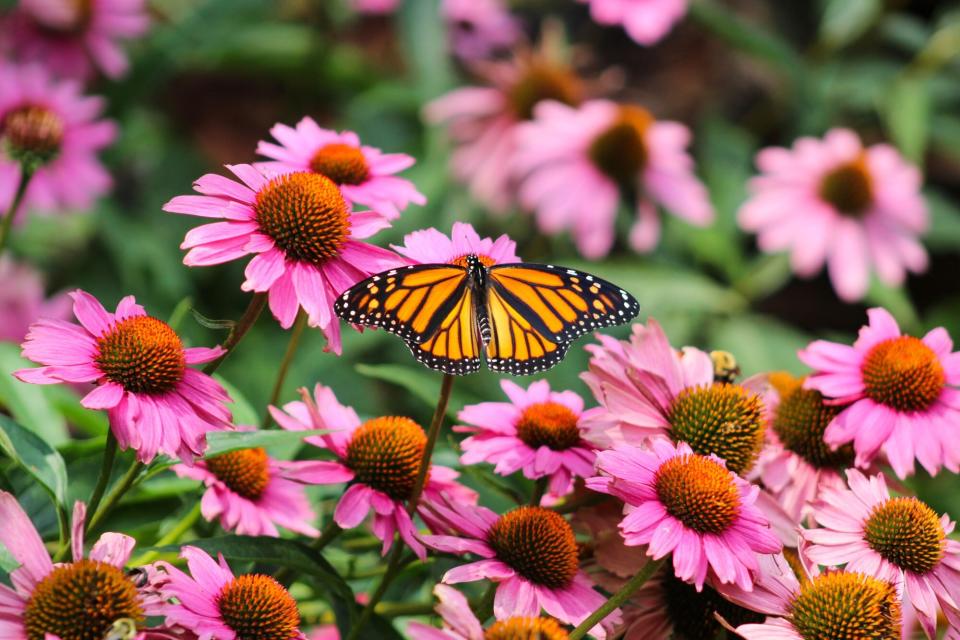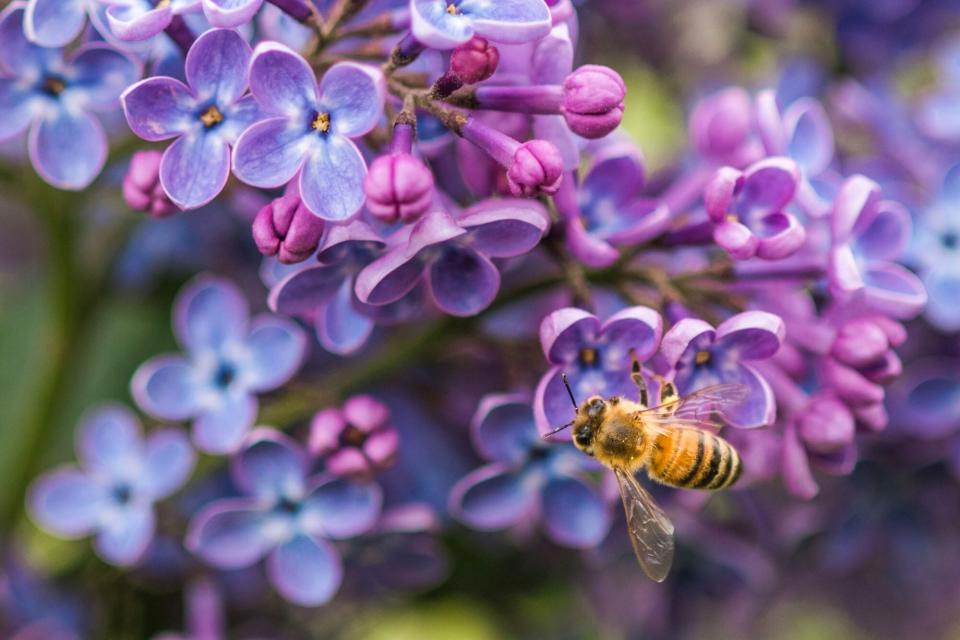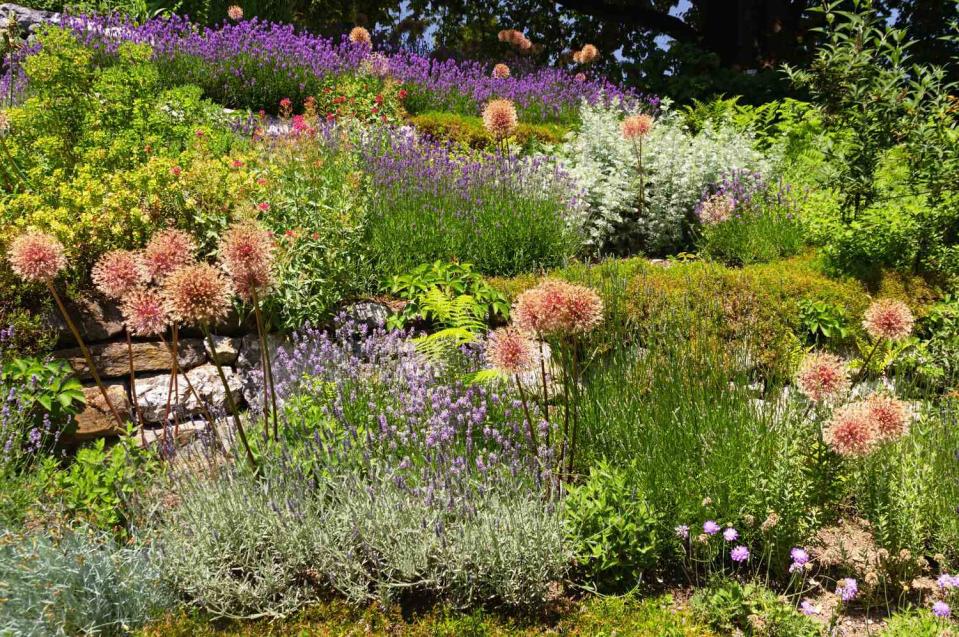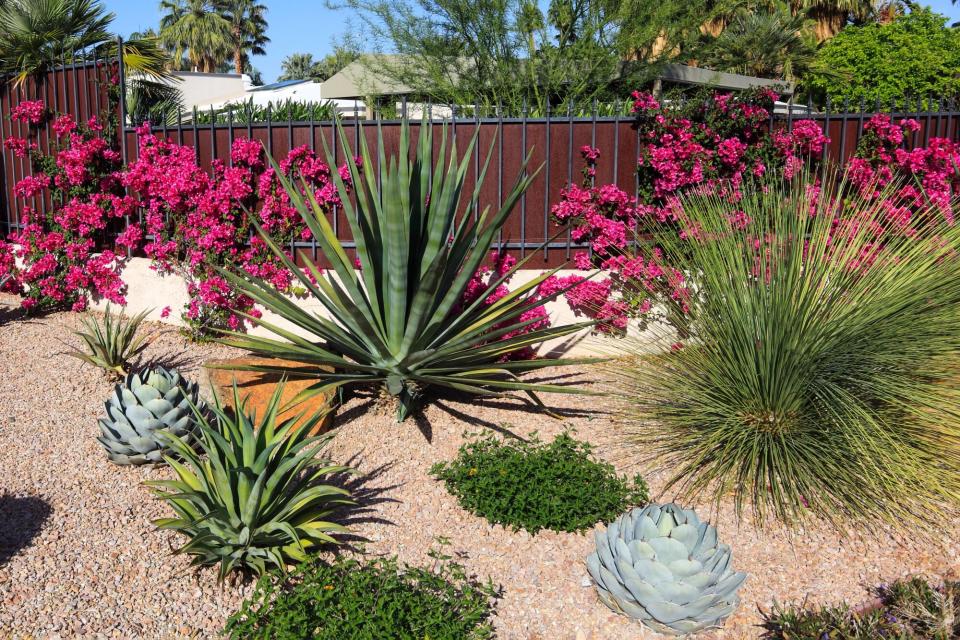9 Garden Trends to Try in Your Backyard This Year
There may still be snow on the ground in many parts of the United States, but that isn't stopping garden professionals and plant aficionados from planning their 2023 gardens. According to some of our experts, there are a few new ideas in the world of horticulture—and so many of them are worth trying out in your yard. These are the booming (or should we say blooming?) garden trends to dig into this year.
Related: 8 Houseplant Trends on the Rise in 2023, According to Experts

GETTY IMAGES
Maximalism
While this word might inspire a few opinions in the world of interior design, maximalism is about to have its moment outside, says Zolene Quindoy, the head horticulturist at Yardzen. Outdoor maximistas will rely less on kitsch and more on color, volume, and texture this year, she says. "This trend is all about creating landscapes that are energizing, vibrant, and fun. It might play out as an eclectic and wild perennial-filled meadowscape or a layered hillside tropical garden paired with playful handmade tile for hardscaping," she says.

GETTY IMAGES
This landscaping trend was likely borne out of the last few years' many hardships. "People have spent a lot of time at home the past two years looking at and living in their outdoor spaces. During the pandemic, functional front and backyards surged as people needed more livable space for daily activities," Quindoy says. "Now, as people have settled into their homes, they've had a long time to understand their own style and aesthetic—and they're craving landscapes that aren't just functional, but showcase their personal style, too."

Lisa Stokes / GETTY IMAGES
Vertical Gardening
Want to see what's new in the world of gardening in 2023? You'll have to look up! Vertical gardening will become more popular this year, since it can liven up outdoor spaces for renters and homeowners alike, says Mallory Micetich, a home expert at Angi. "For people without lots of yard space, like renters or condo owners, vertical gardens are a way to adapt to their living space and incorporate greenery and other plants into the space they do have," she says. "For those with a bit more outdoor space, vertical gardens can provide privacy from neighbors or a beautiful backdrop for their outdoor work-from-home space."

Irina Selina / GETTY IMAGES
Climate-Conscious Gardening
Many people have come to terms with the idea that climate change will continue to disrupt life for many people around the world, which is why a lot of home gardeners are looking for ways to think globally while acting locally. "Coming off another extremely hot summer, sprinkled with news of monarch extinction, extreme water restrictions in the West, drought expanding to new regions, and more, homeowners all over the country are proactively seeking out sustainable design solutions for their yards," Quindoy says.
Due to persistent drought and extreme weather, water conservation is no longer just a trend. "We'll continue to see homeowners who want to reduce water-intensive lawns and replace them with alternative species like clover, install low-water edible front yards, or re-wild their yards with native and climate-adapted species that require far less maintenance, water, and fertilizer," Quindoy says.
Quindoy predicts that 2023 will also bring more permeable hardscape designs in flood-prone areas and fire-smart planting in wildland-meets-urban locales as well. This is more than just a hunch: According to Pinterest Predicts, searches for "drought-tolerant landscaping" were up over 385 percent at the end of 2022.

GETTY IMAGES
(Colorfully) Planting With a Purpose
We'll see a lot more color returning to gardens in the new year, as well. "Soft, muted, and dusty greens and neutrals have been very popular over the past few years," Quindoy says. "Now, people are looking for a little more joy in their gardens, especially in the form of pollinator plants that not only bring a pop of color, but support crucial pollinators like birds, bees, and butterflies." That means plants like native sunflowers, coneflowers (echinacea), garden phylox, and asters will likely grow in popularity over the next few months.
Related: How to Grow and Care for Bee Balm, the Pollinator Plant Your Garden Is Missing

Teddi Yaeger / GETTY IMAGES
Bee-Friendly Landscaping
Micetich agrees with Quinoy, and expects to see an explosion of intentionally pollination-friendly yards in 2023. As for the critter that will be top of mind? Bees. "People are more attuned to the environmental benefits of saving bees and are noticing what bees and other pollinators offer their gardens, so they're planting flowers that encourage these visitors—like daisies, lavender, lilacs and honeysuckles—rather than shooing them away," Micetich says.

irakite / Getty Images
Unfussy and Organic Layouts
As bolder colors and maximalist landscapes pick up speed, layouts are getting simpler, notes Quindoy. Expect to see more organic shapes, orientations, and textures in the garden in 2023. "Think unfussy wildflowers, romantic arbors, meandering gravel paths, and mixing and matching plants and styles in a way that feels natural and whimsical," she says. Try it by mixing Mediterranean plants like lavender, agave, and olive trees with warm gravels—and adding a pop of color like bougainvillea for an outdoor space that feels like a relaxing vacation, suggests Quindoy.
The reasoning behind this trend? People are finally hitting the road again, and as they travel (especially to European destinations), they're falling in love with the Old-World charm they discover along the way.

Jacky Parker Photography / Getty Images
Meadowscaping
Flower beds will never fully go out of style, but what goes into those beds will change this year. "We'll continue to see more variety in planting styles within beds—especially where people are looking for low-water or low maintenance styles that still create visual interest and curb appeal," Quindoy says, noting that many people have recently opted for the "meadow style," thanks to its "natural, unfussy, and informal" nature. "The style favors soft and wild ornamental grasses like silvergrass, lomandra, and blue fescue, which give you an organic look that requires little upkeep."

GETTY IMAGES
Allergen-Friendly Plants
People are tired of seeing their doctors after what feels like three years of record medical visits, which is why some of us may want to limit the amount of pollen we experience in and around our homes. "There's a lot of interest in finding natural ways to deal with seasonal allergies, so we anticipate a focus on allergen-friendly plants this year," Micetich says. "Allergen-friendly plants, like spider plants, lavender, English ivy, and snake plants, can also improve sleep and air quality, so they're great to add to any garden, indoors or out."

GETTY IMAGES
Xeriscaping
Droughts and water shortages are nothing new, but the way homeowners respond to them has drastically changed—and that's why we'll see a rise in xeriscaping (a landscaping system that requires little to no irrigation) in 2023, says Quindoy. "The good news is there's been recent momentum and education around the concept, and there is so much room for creativity and different styles within xeriscaping," she says.
This system shouldn't be difficult to employ, since we know our yards better than we ever have before. "The benefit of people spending so much time at home the past few years also means people have more knowledge of the specific conditions of their yard," Quindoy says. "They know where the light and shade is and understand heat and wind exposure, drainage, and more. These are all important conditions to note when creating a thought-out xeriscaping plan."

